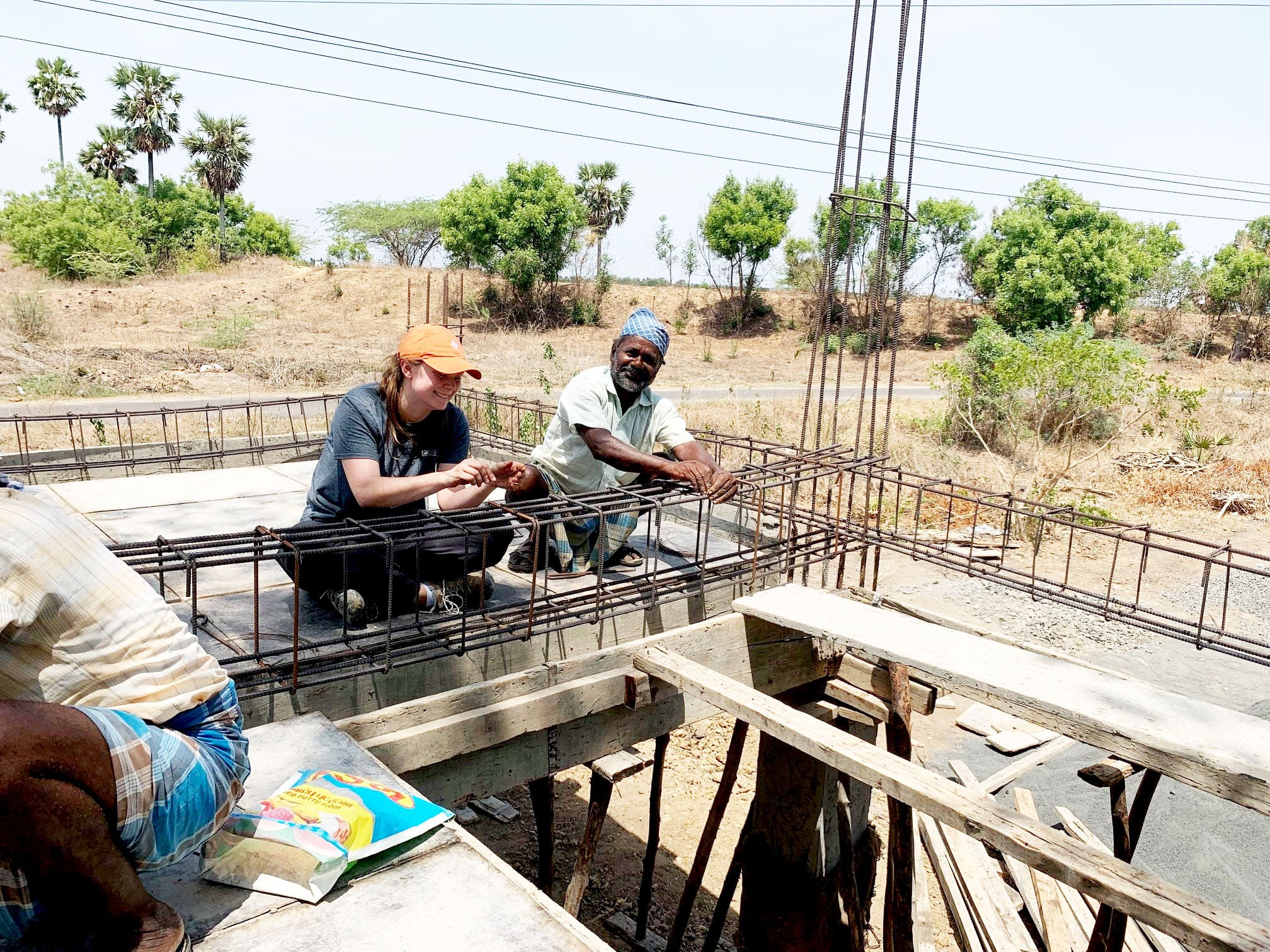Civil engineering and Plan II senior Zia Lyle and her team worked with a local community in India to build a disaster relief shelter.

The term “humanitarian engineering” is relatively new, first gaining popularity in 2002 when civil engineer Bernard Amadei founded the engineering organization Engineers Without Borders. Now, humanitarian engineering is an integral part of the engineering landscape, appearing in the course curriculum and program offerings at many universities nationwide.
Since 2009, students in the Cockrell School of Engineering have been working on humanitarian engineering projects as part of their coursework, starting when Janet Ellzey, professor in the Walker Department of Mechanical Engineering, collaborated with James T. O’Connor, professor in the Department of Civil, Architectural and Environmental Engineering, to launch Projects with Underserved Communities (PUC), a three-course sequence in which teams of engineering and social work students partner with rural communities around the world to solve technical challenges.
Following the success of the PUC program, in which students have completed projects ranging from building a disaster relief shelter for a marginalized community in India to designing and building solar panels to provide electrical power for a children’s malnutrition clinic in Guatemala, Ellzey saw a need to expand educational opportunities and create a more formalized program for students interested in humanitarian engineering. She launched the Cockrell School’s Certificate in Humanitarian Engineering in 2017, offering students the opportunity to apply their engineering skills to global issues while working in collaboration with community partners and faculty advisors.
“PUC was launched because of students’ interest in improving the lives of people living in low-income communities,” Ellzey said. “I was inspired by our students’ passion and realized these projects were opportunities to learn leadership, cross-cultural communication and technical skills while having a positive impact on the world. Through the humanitarian engineering certificate, we are expanding the Cockrell School’s outreach efforts.”
Countries where students in Projects with Underserved Communities have partnered with local groups on solutions specific to the needs of a particular community.

Open to all UT students, regardless of major, the Certificate in Humanitarian Engineering provides students with a framework upon which they can apply their area of study to building sustainable products and solutions for marginalized communities. There are currently 70 students pursuing the certificate.
“I wanted to use engineering in a very direct, hands-on way to make the world more efficient, equitable and just,” said Jane Cloninger, a chemical engineering and sustainability studies junior. “When I heard about the humanitarian engineering certificate, it seemed to fit all the things I'd been seeking, combining social context with engineering and promoting global citizenship. I think it's a great blend of technical and social/contemporary coursework.”
To receive the certificate, students must fulfill a project requirement in one of three areas: Projects with Underserved Communities, Humanitarian Product Development or an approved independent study. Each of these sequences encourages students to develop either projects or products in collaboration with a network of partner communities around the world.
“So many things happen around us every day that we often don't have the opportunity to stop, reflect and discuss,” said aerospace engineering senior Caroline Bik. “The hands-on nature of this certificate helps us better understand the challenges that national and global communities face and how their needs can be addressed through upstream and downstream changes.”
To fund their projects and products for the humanitarian engineering certificate, students raise money through UT’s crowdfunding platform, Hornraiser. One team is designing a waste dewatering device to implement in refugee camps, working to improve sanitation conditions in camps that are densely populated. With limited space per person on site, it is critical to make the area as clean and comfortable as possible for refugees. The team exceeded their fundraising goal, with $5,105 raised. Each team will use the funds for materials and equipment to build, test and iterate on prototypes.
The students’ passion for using their engineering education to serve those in need continues to be the driving force behind the humanitarian engineering certificate’s success, including the addition of a Humanitarian Product Development track in fall 2019, working in partnership with the International Federation of the Red Cross and Red Crescent Societies. Over the coming years, the Cockrell School hopes to continue expanding the certificate to offer more courses and collaborate with partners on a wider range of projects that engage even more students of all backgrounds.
“The idea that we can build infrastructure systems that directly meet basic human needs, such as water and energy, while also encouraging economic progress and bringing joy and connection is something so special,” said civil engineering and Plan II senior Zia Lyle. “Engineering is more than just math and science. It is human, user-focused and forward-thinking.”
For more information, visit the Humanitarian Engineering Certificate webpage or contact Shante Tyus at







